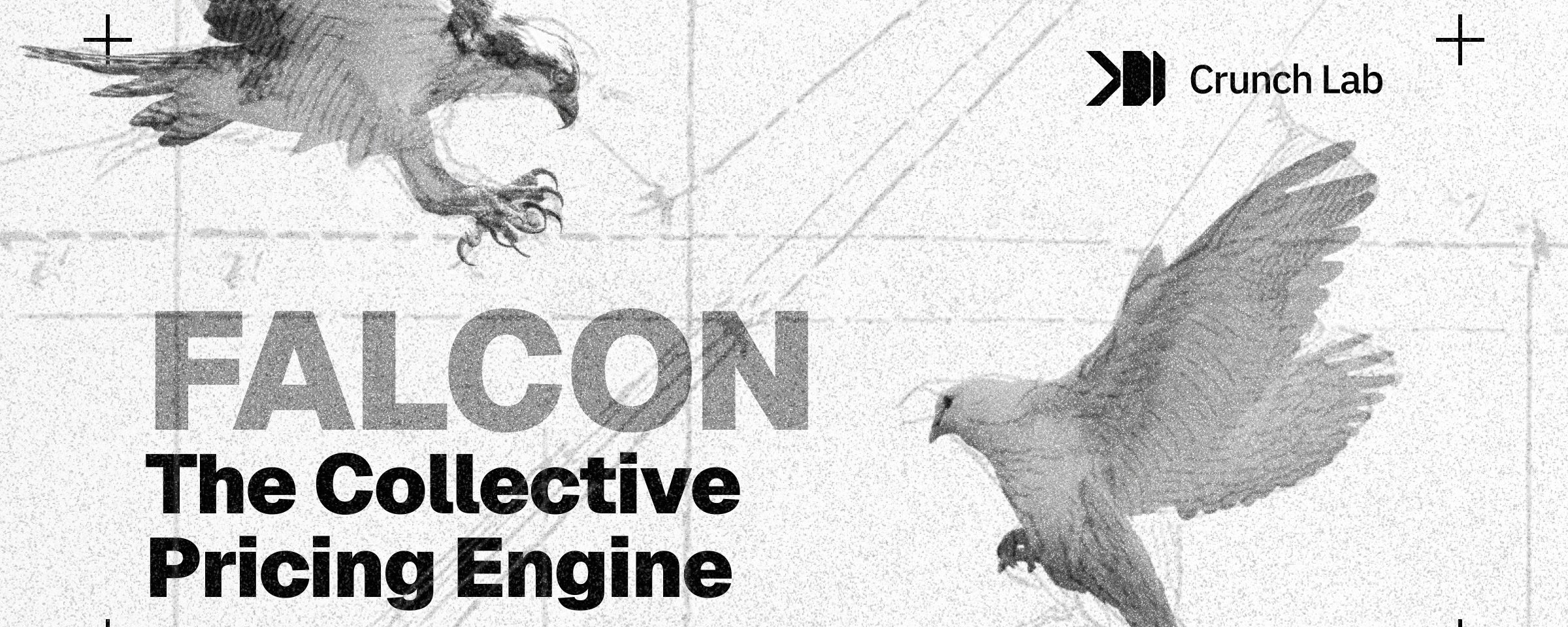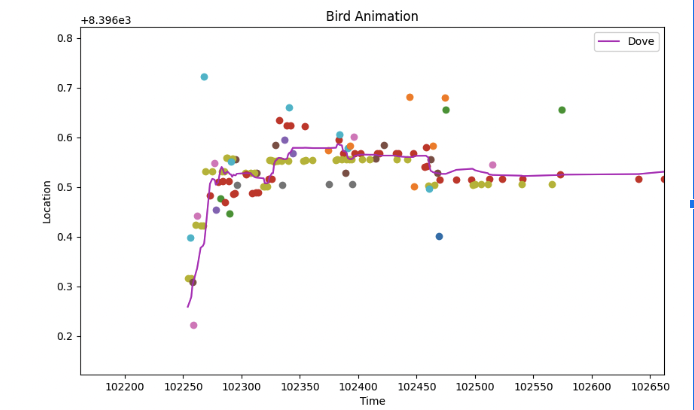Falcon FX
Transforms live movement data into a real-time forecasting challenge, training models to predict uncertainty.

Background
Forecasting under uncertainty is one of the most difficult tasks in machine learning. Traditional models typically generate point estimates or single-number predictions that neglect uncertainty. However, real-world ecosystems like financial markets and weather systems are dynamic and noisy. To thrive in these systems, models must be able to anticipate distributions of possible outcomes rather than just the most likely.
Crunch made the Falcon challenge as a real-time, interactive test to see how probabilistic predictions works in real life. As falcons chase the dove, players have to guess what it will do next. Real-time data, probabilistic modelling, and tactics are all used in the challenge to make it competitive, with the best forecasters rising to the top.
The Challenge
At its core, the Falcon challenge asks a simple but difficult question: Can you outsmart the falcons and forecast where the dove will go next?
Players receive a live feed of structured records. Each record updates in real time, showing the dove’s movement and the positions of multiple falcons. Some falcons provide useful signals about the dove’s future path. Others are just noise. Players must determine which inputs are relevant and incorporate them into their models.

Predictions are judged on both accuracy and how well they capture uncertainty. A good forecast should show the range of possible outcomes and their probabilities.
This shifts forecasting from making a single guess to mapping out multiple possible futures.
Solution
Players then need to build Trackers, which are probabilistic models that process real-time inputs and generate forward density predictions. Instead of outputting one “best guess,” a Tracker outputs a probability distribution over where the dove might be next.
For example:

The challenge framework supports advanced approaches such as:
- Gaussian distributions to capture uncertainty in location
- Gaussian mixtures for multi-modal predictions when multiple outcomes are plausible
- Dynamic retraining to adapt to sudden shifts in dove or falcon behavior
To ensure fairness, wealth is distributed based on likelihood scores. The more accurate and well-calibrated your forecast, the larger your share.

Impact
Falcon achieves several goals at the same time:
Volatility prediction: The same methods used to track the dove can be applied to financial markets. Models learn to predict volatility a few seconds ahead. That’s the kind of foresight market makers need to price and trade more effectively.
Hands-on learning: Teaches forecasters the importance of modeling uncertainty, not just point predictions.
Scalable testing: Evaluates models against live, unpredictable data streams, closer to real-world conditions than static datasets.
Community engagement: Transforms abstract statistical concepts into an engaging, competitive game where participants learn by doing.
Benchmarking innovation: Provides a shared framework for testing probabilistic forecasting methods, encouraging experimentation with density functions and distributional models.
Conclusion
The Falcon challenge was designed as a sandbox for probabilistic forecasting. By turning live prediction into an interactive challenge, it showcases how collective intelligence can tackle uncertainty in real time.
In fields like finance, climate science, and healthcare, decisions are rarely made in conditions of certainty. A single-point prediction can be dangerously misleading if reality shifts. Forecasting distributions maps out possible outcomes and their probabilities, helping decision-makers prepare for multiple scenarios.
The Falcon challenge demonstrates this principle in practice. By rewarding players who capture uncertainty, it highlights an important trend in forecasting: moving away from deterministic guesses, and toward models that embrace uncertainty as a source of strength.
Watch the full tutorial 👇

